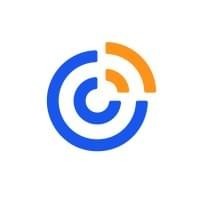
Anyone who’s visited a Currys recently – or perhaps a Decathlon in Spain or even a Lowe’s store in the San Francisco Bay Area – may already have encountered a retail robot.
These few examples mark the start of something huge on the high street if a forecast by tech analyst ABI Research is to be believed. Last year it predicted that the annual revenue of the emerging sector providing retail robotics could exceed $8.4bn (£6.9bn) by 2030, so perhaps we’d better get used to the idea of seeing more silicon-based shop staff.
Robotics, and automation more generally, represent an opportunity for retailers as they wrestle with the constant challenge of managing the omnichannel experiences they offer while their costs rise and shoppers’ habits change. This technology was first used by the retail industry in back-office functions such as warehousing, but it has been adopted more recently for last-mile fulfilment – Co-op’s use of home delivery robots from Starship Technologies, for instance – and assistance on the shopfloor.
Families, especially those with young kids, have generally been mesmerised by the robot
Given how deeply self-service checkouts have divided opinion among supermarket shoppers over the years, it should come as no surprise that not everyone is a fan of this latest development – certainly not the customer who assaulted Pepper, one of SoftBank’s friendly humanoid bots, in a drunken rage in 2015. (Last year the Japanese conglomerate confirmed that it was discontinuing production of Peppers after slashing jobs at its robotics arm, as the demand for them hadn’t met expectations.)
Even Currys’ new robot has been mocked on TikTok for having a name similar to the slang term for the veterinary tranquiliser that’s widely abused as a recreational drug.
Getting comfortable with in-store robots
Maybe that’s a little unfair. The KettyBot, named by its Chinese manufacturer Pudu Robotics, is going down a storm. So says Ainsley Sykes, head of commercial initiatives and retail design at Currys.
“Families, especially those with young kids, have generally been mesmerised by the robot and what it can do,” says Sykes, who admits that staff in the four stores trialling the technology were “apprehensive” about their plastic colleagues at first.
They feel far less threatened now, recognising that the KettyBots are there not to take their jobs but to help them deal with customers on the front line, he stresses, adding that the bots have generated a wealth of useful data about their interactions with customers.
And the name? “Were we to permanently introduce these robots into our stores, we would look to work with our colleagues to find them a new name,” Sykes says.
For now, the KettyBot reflects how some of the larger retailers are thinking, according to Miya Knights, retail technology consultant and co-author of Amazon and Omnichannel Retail. She reports that robots are part of a more general move towards in-store automation. Two notable examples she cites are the adoption of Volumental’s 3D foot scanner by several shoe retailers and Target’s partnership with vendor Clockwork to provide a machine offering 10-minute manicures to busy shoppers.
What do customers want from robotic assistants?
As retailers continue to automate, it raises an obvious question about their motives: are they really trying to improve the customer experience or are they seeking to cut their labour costs?
It’s likely to be a bit of both, according to Knights. She suggests that, while companies face a real challenge in balancing technological efficiency and the human touch, reducing the amount of time that front-line employees need to spend on low-value tasks could give them more scope to work on turning visitors to their stores into loyal customers and even brand advocates.
It’s a view shared by Stuart Higgins, partner at management consultancy BearingPoint. He suggests that using robots to do menial work should enable store staff to spend more time performing “more value-adding and satisfying roles focused on improving customer satisfaction and sales”. He cites Currys’ KettyBots as a good example of this.
The key, of course, is to understand what customers might want from their human and synthetic shop assistants respectively and to work out how to deliver those things.
Although some of the early breed of in-store robots might seem a little gimmicky, Higgins suggests that some retailers have made real progress in finding ways for them to make the shopping experience smoother and more efficient.
“We saw a recent example of this in Zara’s concept store at Battersea Power Station in London,” he says. “If a customer wants to collect an online order from here, they simply take their confirmation email and scan the barcode on it at the collection point.”
Behind the scenes, all parcels awaiting collection are held in a small, highly automated warehouse. Acting on the barcode information, its loading system locates and retrieves the requested parcel, presenting it to the customer through a hatch.
It is, Higgins says, “a brilliant example of back-of-house robotics smoothing the customer journey. At the same time, it frees store colleagues to work on more customer-facing tasks.”
Consumers had better get used to it
It’s the sort of thing that PAL Robotics has been doing with its StockBot, which has been adopted by sports retail giant Decathlon.
Deploying robots effectively in a store is a complex undertaking, says Alexandre Saldes Barbera, director of innovation business development at PAL Robotics, which also has a humanoid retail bot called ARI.
“The store is a dynamic environment,” he says. “The retailer may be changing things round in it daily.”
To this end, StockBot can perform automated inventory counts several times a day if required. It’s also able to pinpoint the location of any given product on the premises.
Such applications should, for the moment at least, be the preferred direction for retailers to take when it comes to automation, according to Higgins. He also throws shopfloor cleaning into this mix, citing Marty, the googly-eyed bot patrolling US grocery outlets run by The Giant Company.
“One thing is certain,” he says. “The democratisation of robotics in the workplace will enable more automation projects in the near future and the faster, more agile deployment of these technologies.”
This, he adds, should help retailers to increase the efficiency of their store operations and improve customer satisfaction.
In a sense, this is about going back to basics – retailers should determine the most common niggles their customers have and how this new tech could solve these recurring problems.
Knights points to the growing influence of gen Z, the first fully digital-native generation that has grown up not knowing a time when ecommerce didn’t exist.
“Gen-Z shoppers want self-service options and they expect accurate inventory information and rapid fulfilment,” she notes. “Many surveys have found that they’re also in favour of robots to deliver these differentiators.”
That’s the challenge. Where can retailers get the most return from automation and deliver the sort of seamless experiences that all consumers, not only gen Zers, increasingly demand?
Robots almost certainly have a role to play in areas such as inventory and fulfilment. Given the drive for improved omnichannel experiences, this makes a lot of sense. The value of putting bots on the shopfloor, giving them faces and asking them to schmooze customers may be a little harder to gauge.
If you do go down that route, just be careful what you name them – although there are probably worse things to happen to a robot than viral humiliation on social media.

Anyone who’s visited a Currys recently – or perhaps a Decathlon in Spain or even a Lowe’s store in the San Francisco Bay Area – may already have encountered a retail robot.
These few examples mark the start of something huge on the high street if a forecast by tech analyst ABI Research is to be believed. Last year it predicted that the annual revenue of the emerging sector providing retail robotics could exceed $8.4bn (£6.9bn) by 2030, so perhaps we’d better get used to the idea of seeing more silicon-based shop staff.
Robotics, and automation more generally, represent an opportunity for retailers as they wrestle with the constant challenge of managing the omnichannel experiences they offer while their costs rise and shoppers’ habits change. This technology was first used by the retail industry in back-office functions such as warehousing, but it has been adopted more recently for last-mile fulfilment – Co-op’s use of home delivery robots from Starship Technologies, for instance – and assistance on the shopfloor.



